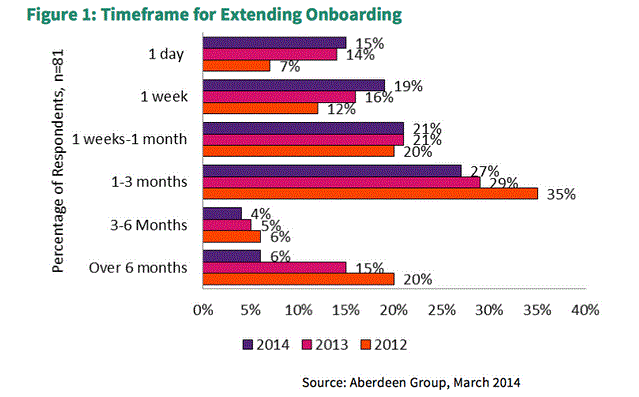New Hire Orientation Template – What Every New Hire Should Know
New hire orientation, sometimes called employment orientation, is a chance to make a positive first impression that will have a long-lasting impact on your employees. According to The Wynhurst Group, “22% of staff turnover occurs in the first 45 days of employment and the cost of losing an employee in the first year is estimated to be at least three times salary.”
This means that dropping the ball on orientation for new employees can be a major factor in terms of whether employees hang around for the long term or treat their job as simply a stepping stone to something bigger and better.
A stellar employment orientation program is a chance for you to really make your new employees feel welcome, happier, and more productive. Happy employees lead to customer happiness and more top-line revenue impact! The question is how do you get them there?
New hire orientation programs are no longer about filling out forms and signing policies. Pushing the envelope means moving beyond merely completing a new employee orientation checklist or hosting death by PowerPoint marathon new hire training events.
Today, onboarding managers need to conduct a well-designed, centralized, and cohesive orientation program, well beyond the scope of a new employee orientation checklist.
Don’t be shy about leveraging technology to facilitate your orientation program. Thanks to a tech-savvy workforce, organizations are using technology as an integral part of their new hire orientation programs.
To get you started, we created a new hire orientation template with all of the foundational topics required to bring in new hires in a way that makes them feel welcome, fully briefed on expectations, and poised to succeed.
Use this template to include all the key topics that are important to cover for new hire onboarding. With the basics nailed, you can focus on putting the icing on the cake!
What every new hire needs to know
Topic 1: Welcome
Greet new hires with an enthusiastic reception! Make sure that the orientation for new employees process starts with a warm welcome and don’t wait for Day 1 to get started! You can put together a welcome kit and ensure that it reaches the new hire before their start date.
The first days can be exhausting and overwhelming for new employees, so don’t overdo it. Instead, focus on reassuring the new hire that they have made a great choice, they are where they belong, and as a company, you are happy to have them there. Beyond the initial welcome, you should also provide some high-level information on the business including its mission statement and where the company is going.
Also, help your new hires start to build the relationships that will be critical to their success and productivity. Introduce new hires to their colleagues and allow time for them to observe and ask questions. The more familiar a new employee is with her department, co-workers, and job expectations, the more likely she is to be productive right from the start.
Topic 2: Company history
Highlight the positive history of the business. Every company has a lot of history behind it and everyone loves a good story. Even start-ups have stories they can draw from. Offer background on how the company made it to the point where it is today. Provide linkage between the past, present, and the future by telling stories about the company from the past and where the company is investing for the future. Explain WHY you do what you do.
This is also a great opportunity to bring out employees that have dedicated their careers to the company, to show what longevity and commitment truly means. Your best employees have the potential to be your best trainers. By utilizing your top employees, you can grant your organization access to the most efficient and successful ways of serving customers!
Topic 3: Leadership
Introduce the leadership team. The leadership team of any organization is going to make or break what employees think of the company that they work for. When your leadership team is able to connect with and inspire new employees, the company is going to be better off for it in the long run. Ensuring that the orientation process provides employees with a chance to connect with senior management will help them better understand the organizational structure, culture, and overall management vibe.
Time-strapped and/or geographically distributed teams can streamline the onboarding process for leadership by codifying the key messages into videos and engaging the team in the content production process. This is particularly practical when you are dealing with a higher volume of new hires. A video is an excellent way to communicate the excitement and passion that is driving the organization.
From a personal touch standpoint, you can create social forums and discussion boards and let the entire team participate in the assimilation of a new hire. This also allows leaders to focus on important things like strategy and vision with a personal touch while ensuring that employees are supported for success.
Topic 4: Culture
Provide information regarding business culture. No two companies are the same from a cultural perspective. Some companies are going to be more formal, while others will be very laid back. It is important to inform your new hire for company traditions such as casual Friday or where people all go to lunch together on Tuesday. No one wants to be the new person that has to figure these things out on their own as they go. Teaching new hires about traditions and culture is often overlooked in the onboarding experience!
The type of culture that a company has should be highlighted during orientation so that new hires can have an understanding of the work environment. The more that they know of the culture, the better they are going to be able to fit in and grow with the company.
Topic 5: Documentation
Address formalities from a document perspective. Documentation is required as part of any new job. Now is the time, during orientation, where you can have your new hires come prepared with all of the documents that they need. Getting these formalities out of the way in a strong pre-join program can make for an even easier onboarding process.
Topic 6: Compliance
Offer information about compliance. Providing information to new hires regarding what is expected of them to maintain compliance will help your new hire avoid confusion down the line as well as costly legal problems. The new hire orientation coverage of compliance should start with a talk about information security. Things such as the law regarding competition and anti-bribery are also important areas to focus on. Health and safety precaution concerns should also be addressed. Be sure to do adequate research on any applicable compliance laws that may be specific to your organization.
Topic 7: Policy
Highlight company policies. Every company is chock full of policy and it is usually more than one can memorize. It is important to at least go through key policies at a high-level during new hire orientation. Consider touching on topics such as leave, sick time, and vacation time so employees know what to expect. Also, show new employees how company policies apply to their departments and their specific job functions.
The other areas of company policy to cover should include travel policy, expense reporting, and reimbursement policies. There may also be policies regarding internet usage, rewards, and recognition opportunities, as well as employee referral opportunities. When it’s all said and done, the most beneficial information on policies will be where the new hire can go to find answers to their policy questions.
New hires have an uphill climb to productivity. With all the information they are expected to absorb they can easily feel overwhelmed.
A good employee orientation program answers your new hire’s initial questions while giving them a structured runway to become familiar with their new role. Having a welcoming and informative new hire orientation will set up your new hires for success in the short and long-run! And if you’re still looking for more resources for when it comes to new hire training and onboarding, take a look at the sales onboarding checklist here.







